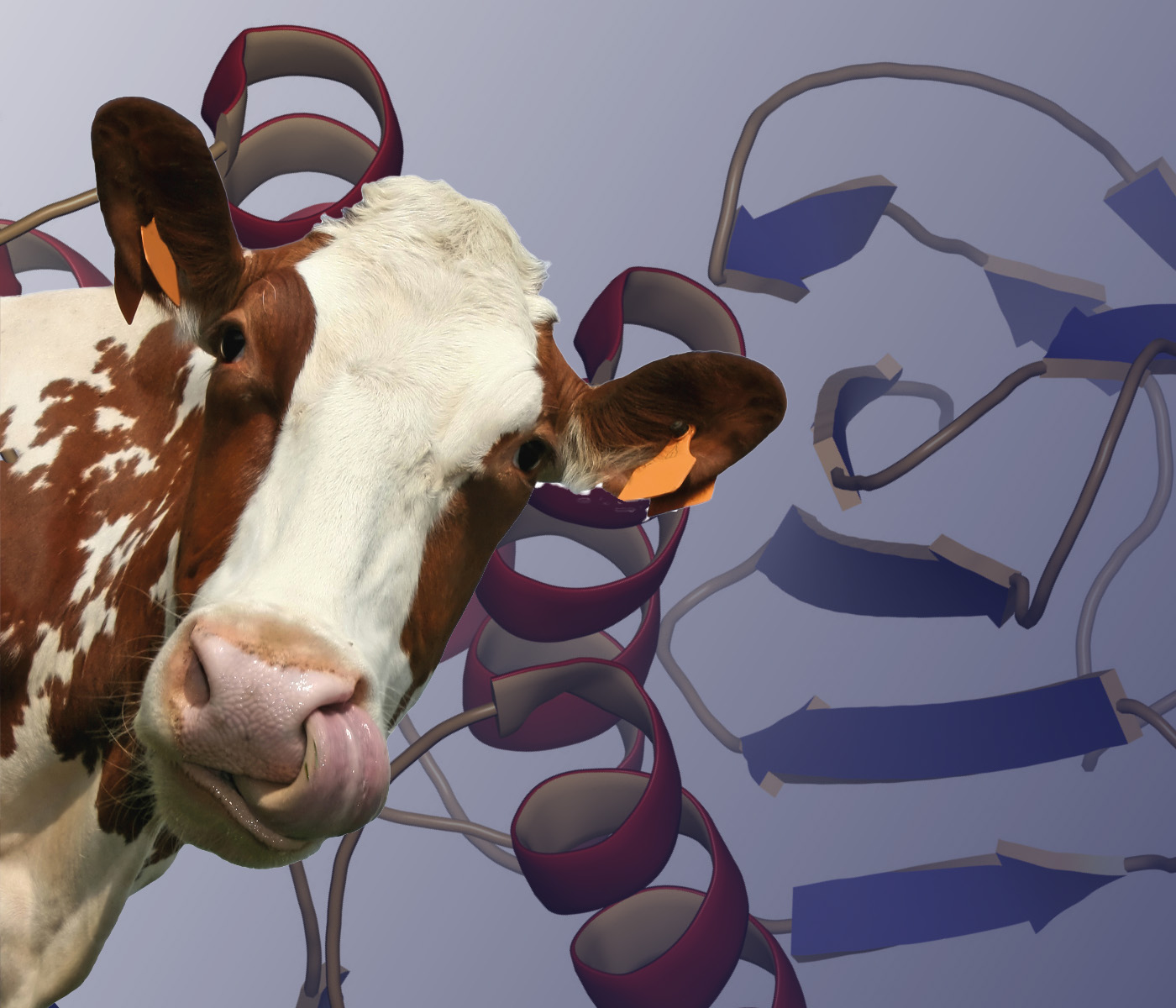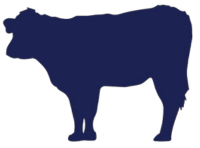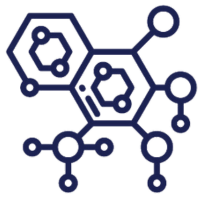Studies indicate that the addition of exogenous enzymes to ruminant diets promotes weight gain improvement (up to 15%) and enhances feed efficiency (up to 14%).
 30 Jun 2023
30 Jun 2023
Exogenous enzymes in ruminant nutrition: applications and benefits

Ruminants are exceptionally capable of converting plant material into protein, which is of great interest for animal production and food security. This interest has spurred numerous studies aimed at technological advancements in the field, encompassing aspects such as ruminant nutrition, genetic enhancements, and management improvements. These efforts have led to significant advancements in ruminant production.
When it comes to ruminant diets, it is important to recognize its significant variability, which is influenced by the specific objectives of the animal production chain and regional factors associated with market considerations for inputs and end products.
 The intricate nature of these variables continually presents producers with challenges in terms of decision-making, viability, and profitability during the production phase. This often entails making necessary modifications to the animals’ diet composition, thereby requiring the adaptation of their ruminal fermentation fauna to accommodate each change. The intricate nature of these variables continually presents producers with challenges in terms of decision-making, viability, and profitability during the production phase. This often entails making necessary modifications to the animals’ diet composition, thereby requiring the adaptation of their ruminal fermentation fauna to accommodate each change. |
![]() Since 1995, significant advancements have been made in the technology of exogenous enzymes designed for utilization in cattle farming. Incorporating exogenous enzymes in animal feed can yield several advantages, including enhanced feed efficiency, improved feed conversion rates, and heightened productive performance.
Since 1995, significant advancements have been made in the technology of exogenous enzymes designed for utilization in cattle farming. Incorporating exogenous enzymes in animal feed can yield several advantages, including enhanced feed efficiency, improved feed conversion rates, and heightened productive performance.
 Moreover, the inclusion of exogenous enzymes in ruminant diets has the added benefit of reducing gas production. By facilitating the more efficient digestion of nutrients, the quantity of methane generated by the animals is substantially decreased.
Moreover, the inclusion of exogenous enzymes in ruminant diets has the added benefit of reducing gas production. By facilitating the more efficient digestion of nutrients, the quantity of methane generated by the animals is substantially decreased.
As research has advanced, there has been a growing recognition among cattle farmers regarding the optimal utilization of this technological tool.
 Enzymes are widely employed in bovine nutrition to enhance the breakdown and absorption of nutrients found in the diet. These protein catalysts facilitate specific chemical reactions within the digestive tract, effectively breaking down complex nutrients into smaller, more readily absorbable components for the animal.
Enzymes are widely employed in bovine nutrition to enhance the breakdown and absorption of nutrients found in the diet. These protein catalysts facilitate specific chemical reactions within the digestive tract, effectively breaking down complex nutrients into smaller, more readily absorbable components for the animal.
 There are several enzymes that can be added to cattle diets, including amylases, proteases, lipases, and cellulases. Each enzyme has a specific function in nutrient digestion and absorption processes.
There are several enzymes that can be added to cattle diets, including amylases, proteases, lipases, and cellulases. Each enzyme has a specific function in nutrient digestion and absorption processes.

Enzymes can be added to the diet in the form of commercial supplements, which are mixed with the animals’ feed or silage. The addition of enzymes can improve the digestibility of specific nutrients, such as starch, protein, and fiber, leading to better animal performance, increased milk production, and reduced feeding costs.
Fibrolytic enzymes, such as cellulases and hemicellulases, are used in cattle feeding to improve the digestibility of fibers present in the diet, such as cellulose and hemicellulose fibers found in feedstuffs like hay and silage.
 They assist in the fragmentation of fibers into smaller particles, thereby aiding the activity of ruminal microorganisms and enhancing nutrient absorption in the animal’s digestive system. They assist in the fragmentation of fibers into smaller particles, thereby aiding the activity of ruminal microorganisms and enhancing nutrient absorption in the animal’s digestive system. |
 This effect occurs due to the assistance of enzymes in the proliferation and fermentation activity of microorganisms related to the production of volatile fatty acids, mainly propionic and acetic acids, which serve as energy sources for ruminants.
This effect occurs due to the assistance of enzymes in the proliferation and fermentation activity of microorganisms related to the production of volatile fatty acids, mainly propionic and acetic acids, which serve as energy sources for ruminants.
Studies indicate that the addition of exogenous enzymes to ruminant diets promotes weight gain improvement (up to 15%) and enhances feed efficiency (up to 14%).
These benefits translate into a significant increase in the profitability of cattle production and also show promising results in reducing the environmental impact of production. This is because there is a significant decrease in nutrient losses in excreta and, above all, in the amount of waste discharged into the environment.
Therefore, it is possible to increase feed efficiency in cattle and reduce feeding costs by reducing the amount of food required to keep animals healthy and productive.
In addition, fibrolytic enzymes also help reduce methane production by cattle, contributing to the reduction of greenhouse gas emissions in livestock production, which remains an important issue within animal production.
 Proteases, are enzymes that can be utilized in cattle nutrition to enhance the breakdown and utilization of proteins found in the diet, including sources like soybean meal, corn, and alfalfa. Proteases, are enzymes that can be utilized in cattle nutrition to enhance the breakdown and utilization of proteins found in the diet, including sources like soybean meal, corn, and alfalfa. |
These enzymes help breakdown smaller proteins, thereby facilitating the uptake of amino acids by the animal’s gastrointestinal system.
 Nonetheless, it is crucial to bear in mind the importance of nutritional supervision by professionals, as an excessive protein intake in the cattle’s diet can result in metabolic complications, including the buildup of ammonia in the organism. Resulting in health problems and potential fatalities among the animals. Additionally, it increases nitrogen excretion, leading to substantial losses and increased environmental impacts.
Nonetheless, it is crucial to bear in mind the importance of nutritional supervision by professionals, as an excessive protein intake in the cattle’s diet can result in metabolic complications, including the buildup of ammonia in the organism. Resulting in health problems and potential fatalities among the animals. Additionally, it increases nitrogen excretion, leading to substantial losses and increased environmental impacts.
Amylases are enzymes that are effectively employed in intensive cattle feeding to improve the breakdown and utilization of carbohydrates contained in the diet, specifically targeting starches found in sources like corn and barley.
 Amylase performs the hydrolysis of starch within the rumen environment, transforming it into oligosaccharides. These oligosaccharides remain stable in the rumen, unaffected by changes in pH and temperature, thereby contributing to the control of acidosis and enhancing the energy metabolism of cattle in confinement.
Amylase performs the hydrolysis of starch within the rumen environment, transforming it into oligosaccharides. These oligosaccharides remain stable in the rumen, unaffected by changes in pH and temperature, thereby contributing to the control of acidosis and enhancing the energy metabolism of cattle in confinement.
Oligosaccharides can serve as a highly efficient energy source for microorganisms specialized in fiber degradation, a phenomenon commonly referred to as “cross-feeding.”
 By increasing the energy supply for fibrolytic microorganisms, the time required for fiber digestion can be significantly reduced, leading to enhanced overall feed digestibility.
By increasing the energy supply for fibrolytic microorganisms, the time required for fiber digestion can be significantly reduced, leading to enhanced overall feed digestibility.
Lipases, on the other hand, are enzymes that act in the digestion of lipids and play an important role in the metabolism of fat-soluble vitamins. They are widely used in cattle feeding to enhance the absorption of energy and vitamins present in the diet.
Throughout this entry, we have discovered numerous advantages associated with enzyme utilization. Nonetheless, it is crucial to bear in mind that the supplementation of enzymes in ruminant diets should be approached cautiously and with the guidance of a qualified professional, such as a livestock specialist or a veterinarian specializing in nutrition. Factors like diet composition, age, and the overall health of the animals must be carefully considered.
Furthermore, it is important to ensure that the enzymes used are safe for the animals and do not pose risks to their health or the environment.
References available upon request
Source: This article was originally published as a content in portuguese in NutriNews Brasil 2023
Subscribe now to the technical magazine of animal nutrition
AUTHORS

Hybrid Rye Potential in Laying Hen Feed Rations
Gwendolyn Jones
A day in the life of phosphorus in pigs: Part I
Rafael Duran Giménez-Rico
Use of enzymes in diets for ruminants
Braulio de la Calle Campos
Minerals and Hoof Health in the Pregnant Sow
Juan Gabriel Espino
Impact of Oxidized Fats on Swine Reproduction and Offspring
Maria Alejandra Perez Alvarado